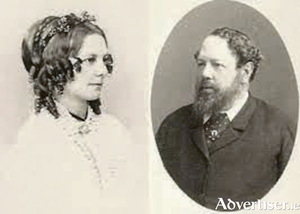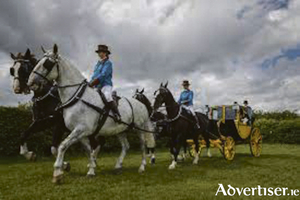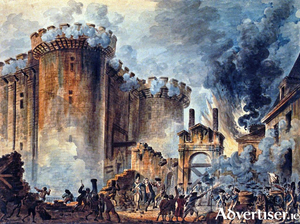Search Results for 'Martins'
7 results found.
Progress in a task of great humanity
It is hard to believe that almost a decade has passed since Catherine Corless first appeared on our pages, on our TV screens, on our radios, telling us a story that defied the prevailing logic. It was a story that resonated around the world.
Fantasy castles in 19th century Connemara

It must have been an extraordinary sight in the 1860s to see Kylemore castle rise from a bog in the heart of Connemara’s Twelve Pins, barely a decade following the devastation of the Great Famine. More than 100 men were employed, some coming from as far away as Renvyle and further, at a handsome wage of seven to 10 shillings a week, turning rough, soggy land, only good for shooting wild fowl and for fishing in its nearby lakes, into a magnificent building. Today it stands more like a palace than a castle, and is still a show-stopper on the Letterfrack road.
At last a chance to mourn properly
What strikes me is the ordinariness of the forenames. The Patricks, the Julias, the Marys, the Peters, the Johns, the Mauds. Not names you associate with children. Names you associate with people who have lived a full life, a life they never got to life.
‘One of the most extraordinary persons’ Maria Edgeworth ever met

As the legendary Colonel Richard Martin neared the end of his life in Boulogne, where he had fled to escape his numerous creditors, a large four-horse carriage, on which two postilions, in jackets of dark-blue frieze, guided the coach on horse-back, arrived at the front door of Ballynahinch. It was dark, and its occupants were in a state of near exhaustion.
The French Revolution and the revolution in the Martin household

On the afternoon of July 14 1789 a mob unleashed its fury and frustration by forcing an entry into the Bastille, a medieval armoury, fortress and political prison in the centre of Paris. In the short but bloody battle that ensued some 98 of the mob were killed, as were three officers of the guard. Three more were lynched, and Marquis de Launay, governor of the prison, and the local mayor, Prevot de Flesselles, who had pleaded for peace, were stabbed to death and beheaded. Although the prison contained only seven inmates at the time of the storming, it was seen as a symbol of the monarchy’s abuse of power. It was the flashpoint of the French Revolution.
Wolfe Tone’s passionate love affair with Mrs Eliza Martin

One of the most intriguing pieces of theatrical memorabilia in Galway is the poster for two plays, Douglas and All the World’s a Stage, to be performed at Richard Martin’s theatre, Kirwan’s Lane, on Friday August 8 1783. The playbill shows the cast with included Martin himself, his wife Eliza (Elizabeth Vessey) and Theobald Wolfe Tone, who would become Ireland’s famous revolutionary, associated with the French inspired 1798 rebellion.
A fantasy of romantic days of yore

It must have been an extraordinary sight in the 1860s to see Kylemore castle rise from a bog in the heart of Connemara’s Twelve Pins, barely a decade following the devastation of the Great Famine. More than 100 men were employed, at a handsome wage of seven to 10 shillings a week, turning rough, soggy land, only good for shooting wild fowl and for fishing in its nearby lakes, into a magnificent building. Today it stands more like a palace than a castle, and is still a show-stopper on the Letterfrack road.

